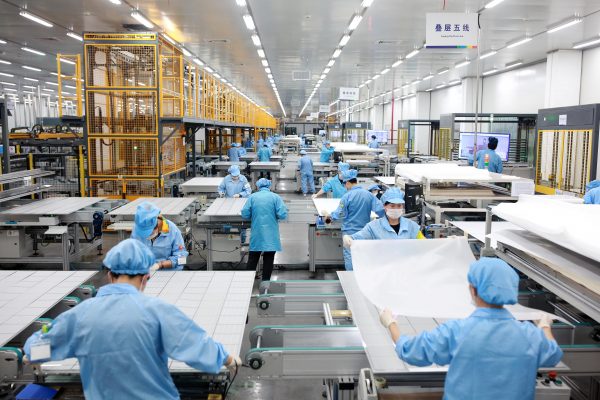In 2020, China produced 396,000 tons of polysilicon, accounting for almost 76 per cent of global production. China’s main hub for polysilicon production is Xinjiang, the historically Muslim-majority western province. Of the 10 or so polysilicon companies in China that produce more than 10,000 tons per year, 4 have production based or planned in Xinjiang.
Mountains of carefully accumulated evidence point to the Chinese government’s large-scale human rights atrocities against Uyghurs and other minorities. Links between human rights abuses and the local polysilicon industry have been sufficient enough to attract a firm response from the US Department of Commerce. In June 2021, the department added all four of the Xinjiang-based polysilicon giants to the Entity List, which banned imports of their products to the United States.
Despite US sanctions, the companies are continuing their Xinjiang operations, with many investing in expansion. Hoshine Silicon Industry and East Hope New Energy have made major partnership and construction announcements in Xinjiang since the sanctions began. Hoshine has immediate plans for a ‘silicon-based new materials industry integration project’ in Ganquanbao, just north of Xinjiang’s capital, Urumqi, with an investment of US$5.3 billion and a launch date in 2024. East Hope is investing US$149 million in a new polysilicon project in Xinjiang, with a capacity of 60,000 tons of production, which will kick off in May 2022.
But production in China’s southwestern and northern provinces will soon surpass Xinjiang’s output — in a response to lucrative government incentives and the advent of low-cost, renewable-powered manufacturing possibilities.
New and expanded facilities in Yunnan, Ningxia and Inner Mongolia are projected to create more than 850,000 tons of annual polysilicon production — over twice China’s 2020 output. Based on these projections, the new developments will likely dwarf Xinjiang-based production, making it less than half of China’s total polysilicon output.
On top of already low electricity costs in these three provinces, Yunnan is a top hydropower producer, and Ningxia and Inner Mongolia are both competing for the top spot for green hydrogen production, supported by their plentiful solar and wind energy. These renewable energy capabilities align with China’s 14th Five Year Plan’s ambitions for green and low-carbon manufacturing.
Another force reducing the relative attractiveness of Xinjiang as a production centre is a new plan to near-fully automate the photovoltaic supply chain by 2025. Handling the delicate wafers of semiconductor material is typically the most labour-intensive part of the photovoltaic production process. China’s plan to automate this work will greatly decrease the cost of photovoltaic manufacturing, while also diminishing reliance on human labour — Hoshine Silicon is accused of using forced labour to crush silicon at its facilities.
Chinese media outlets have rebutted claims of forced labour practices by downplaying the significance of human labour in today’s supply chain. A public relations campaign has generated most of these comments and it has been difficult, if not impossible, to verify on an industry-wide basis. But as of January 2022, the automation milestones for the Chinese photovoltaic industry are readily available and it is clear they come with an explicit government mandate.
A coalition of key government ministries released the Smart Photovoltaic Industry Innovation and Development Action Plan (2021–2025) to the public in April 2022. The plan calls for research into and promotion of automated polysilicon production, including automated production lines for rods and wafers.
The speed and intensity of China’s research and development efforts in similar areas and the goals of the 14th Five Year Plan suggest these plans will matter for all the big producers for the foreseeable future.
After years of reputational damage internationally, China’s polysilicon industry is on track to look operationally unrecognisable in the next few years. But it is political and economic reasons, not an ideological turnaround, driving this change.
Alice Dawkins is a Senior Associate at Lydekker, a boutique Asia strategy and market advisory firm.
Dr Luke Hurst is Managing Director at Lydekker, a boutique Asia strategy and market advisory firm.

